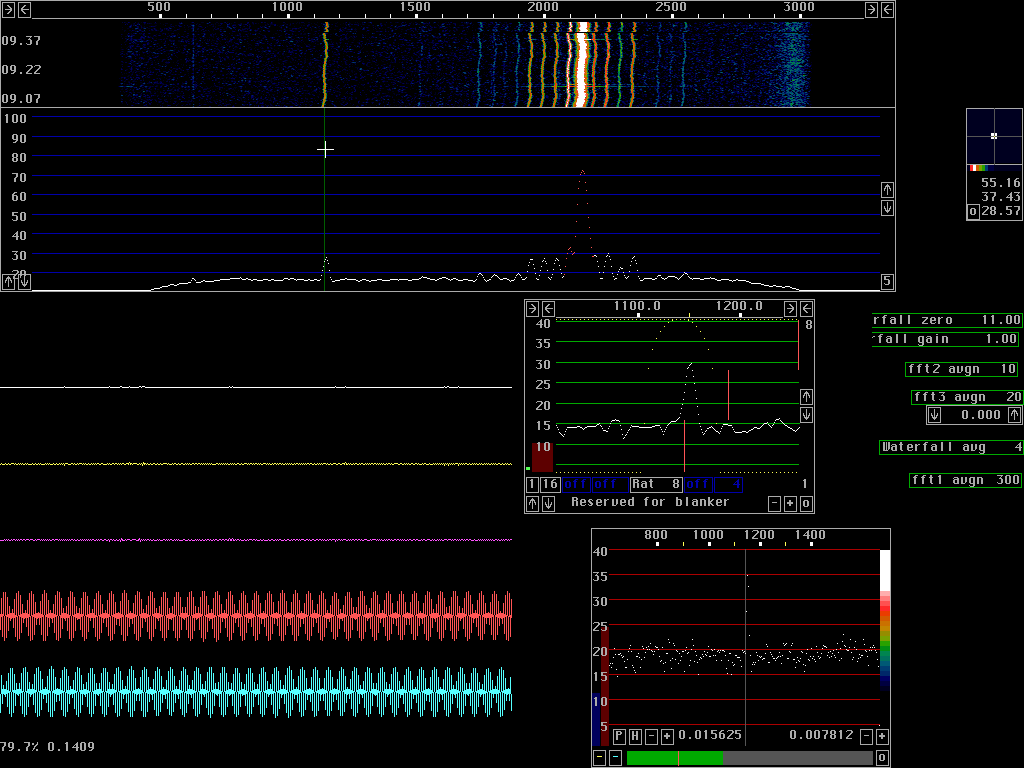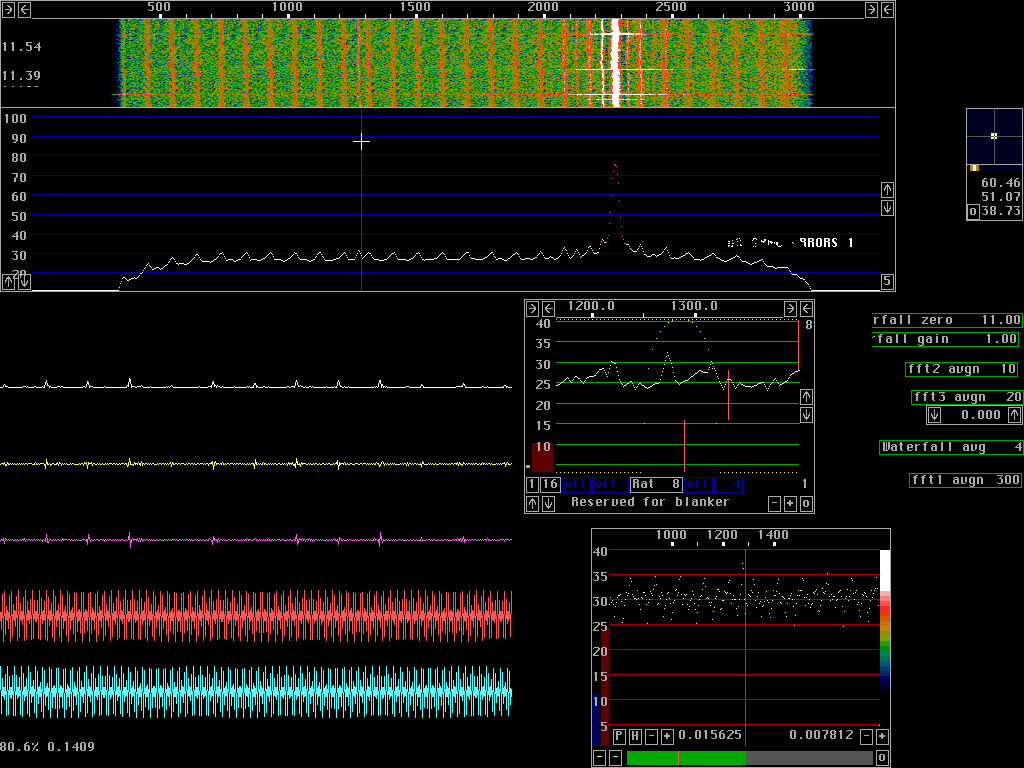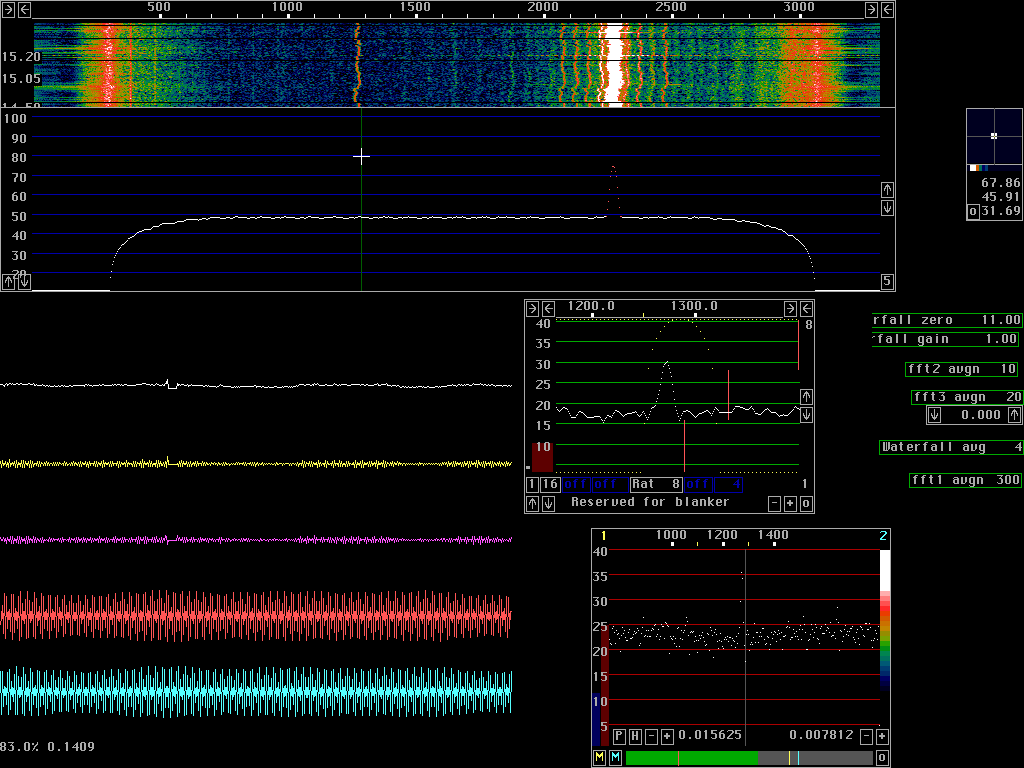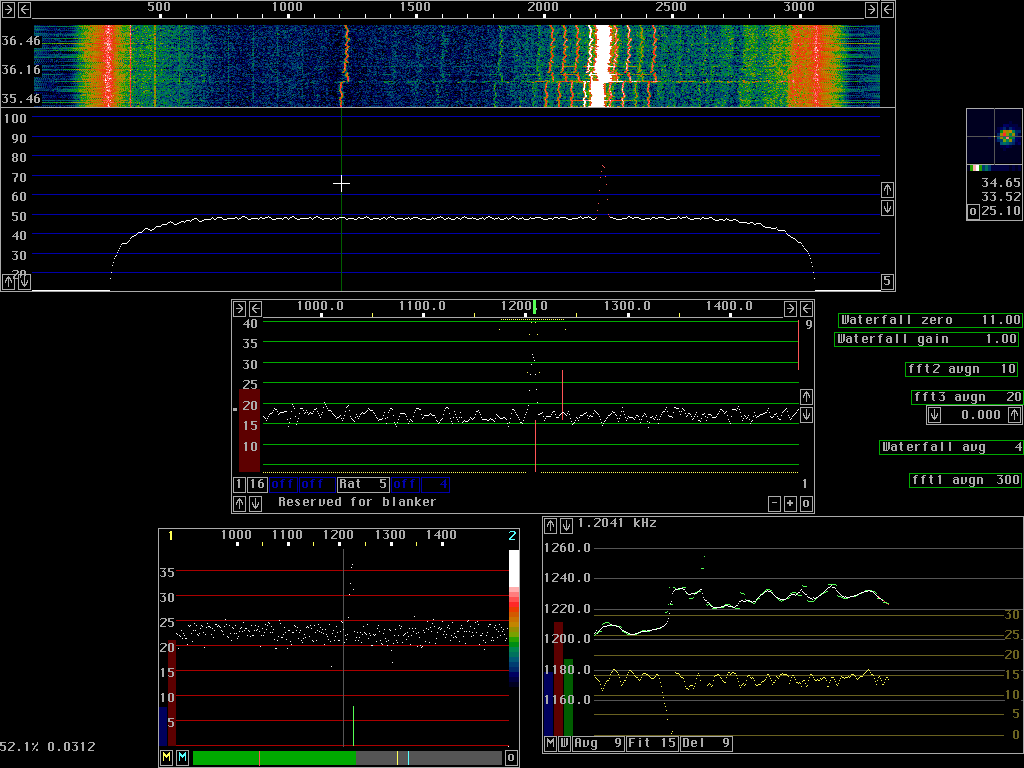Linrad on elderly computers at SSB bandwidthTo get all advantages of Linrad one needs a two channel system with a large bandwidth. Linrad may be very useful even as a post-processor to a quite conventional transceiver with normal SSB bandwidth. For a single channel and with a sampling speed of 8kHz a 60MHz Pentium is fast enough to run full processing including the noise blanker (second FFT).This page shows some screen dumps made with a Pentium I at 60MHz processing the output from a Kenwood TS-520 transceiver. The screens show that Linrad makes it possible to copy a weak signal that is buried in QRN close to a strong signal. The TS-520 noise blanker makes too much noise but Linrad is able to find the pulses and remove them from the audio signal if the TS-520 noise blanker is disabled. The advantage of Linrad is of course much larger if the offending strong signal is outside the SSB filter of the TS-520. It would then still interfere with the TS-520 blanker but the Linrad blanker would operate completely unperturbed. For the sucessful operation of the Linrad blanker good linearity of the SSB transceiver is required. I do not think the TS-520 is particularly good, but that is the transceiver available to me at the moment. For the screen dumps on this page, the different signals were added with hybrids and attenuators so the TS-520 looks into the same source impedance all the time and the signals do not affect each other. For an easy comparison between the images figures 1 to 5 were produced with exactly the same settings for Linrad.
|

|
Fig.1 The noise floor without any signal into the TS-520
|

|
Fig.2 Signals only.
The desired signal at 1150Hz is about 15dB above the
noise in the baseband graph.
The strong undesired signal at 2150Hz is 45dB stronger
and has some modulation sidebands.
In this situation Linrad removes the undesired signal completely
as would more or less any audio filter do, dsp or analog.
|

|
Fig.3 QRN, noise pulses only. The pulse repetition rate is 100Hz.
Note that Linrad has to be properly calibrated to produce
nice-looking pulses like this.
|

|
Fig.4 The signals and the QRN pulses are sent into the TS-520
simultaneously. Both the signals of fig. 2 and the QRN of fig.3.
The TS-520 noise blanker is enabled.
The desired signal is now only 7dB above the noise in the
baseband graph and it could easily be even more disturbed
depending on how the TS-520 blanker modulates the strong
signal with 100Hz pulses. Gating out the QRN pulse means
modulate the undesired signal now at 2250Hz with 100% AM
modulation.
The sidebands could fall on top of the desired signal and
hide it completely.
If the desired signal had been a CW signal it would have been
impossible to copy.
|

|
Fig.5 The signals and the QRN pulses are sent into the TS-520
simultaneously. Both the signals of fig. 2 and the QRN of fig.3,
exactly as in fig. 4. For this screen the TS-520 noise blanker
is switched off and the Linrad noise blankers are switched on.
Note that the desired signal is now about 13dB above the
noise floor in the baseband graph.
If the desired signal had been a CW signal it would not have
been difficult to copy.
|

|
Fig.6 Linrad is operated as in fig. 5 with exactly the same input.
Here the timf2 oscilloscope is switched off and the AFC is enabled.
The FFT size for the waterfall (fft2) is twice as large compared to
figures 1 to 5.
Note that the CPU load here is only 52% on the Pentium 60MHz.
The TS-520 is very unstable. The AFC makes the bandwidth much narrower and therefore the S/N is now 15dB in the baseband graph. The parameters used for this gif can be downloaded here tspar.tbz (1413 bytes) Unpack with bunzip2 and tar. The fft1 size is 512 and the fft2 size is 2048 giving bin widths of 16 Hz and 4 Hz respectively with the sine squared windows used. The AFC is set for a weak and unstable signal so the processing delay is 4 seconds. With a stable signal the AFC delay can be set to zero and then the processing delay becomes 1.5 seconds with these parameters.
|

|
Fig.7 The TS-520 has an ugly frequency response.
Using the phase and amplitude collected from, in this case, the average
of 852 pulses, Linrad computes a digital filter that corrects
phase and amplitude to provide an ideal frequency and phase
response for the entire signal path.
Magenta is amplitude, green is phase.
The frequency range is 0 to 4kHz because the sampling is at 8kHz.
|